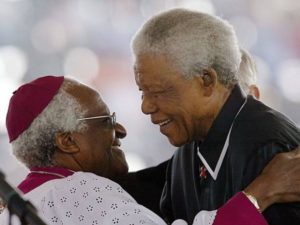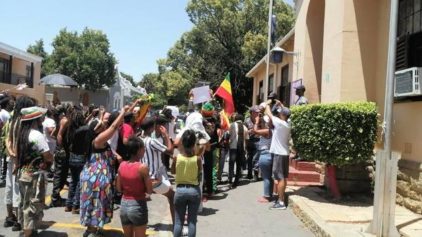Not many streets have been home to a Nobel Laureate—and even fewer have been home to two. Yet, Vilakazi Street in the heart of bustling Soweto has been exactly that, housing both South African leaders Archbishop Desmond Tutu and Nelson Mandela. And this claim to fame is paying dividends for current residents—helping transform the area into a thriving business community.
Here, visitors from all over the world walk past traditional dancers, hawkers and waiting taxis to visit the building that was Mandela’s home when he walked free from prison on Robben Island in 1990. With its restaurants, boutiques and bars, this buzzing boulevard is no ordinary residential road.
For local entrepreneur Sakhumzi Maqubela, it was words spoken by the iconic freedom fighter that inspired him to open a restaurant in the area—and provide employment for people in his community.
“Mandela used to fight with people that ever since there is black government people are complaining unemployment is high, the crime is high,” Maqubela remembers. “Mandela was saying, ‘what are you doing in your own capacity to create jobs?'”
Maqubela left his job at a major bank to start the business in 2001. Back then, he had four employees, but now he employs 75 people to serve traditional local dishes and burgers to approximately 400 customers a day.
“Tourism business has grown a lot here,” he says, “especially after the 2010 World Cup—we get tourists almost every day.”
Indeed, the number of visitors to Johannesburg as a whole has increased by 300,000 since 2010, according to the Mastercard Global Destination Cities Index. And the growth in visitors has led to more money being spent. The 4.3 million people who visited the city in 2014 spent $3.2 billion, up from the $3.1 billion tourists spent in 2012.
Such economic realities are changing perceptions of Soweto, which has a poor and violent past.
During the struggle against the brutal policies of apartheid, students and residents took to the township’s streets in June 1976 to protest against the use of Afrikaans as the main teaching language in schools. Some estimates say over 560 people were killed during the countrywide unrest which followed. The episode shocked the world, and caused international governments to impose sanctions against South Africa.
Among the dead was 12-year-old Hector Pieterson, who was shot by police in Soweto. A museum dedicated to the memory of the uprising, named after Pieterson, now stands close to the spot where the child was fatally injured.
Read more at CNN


